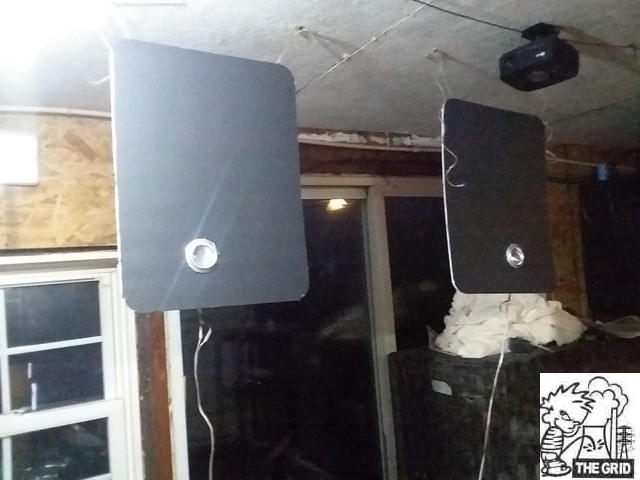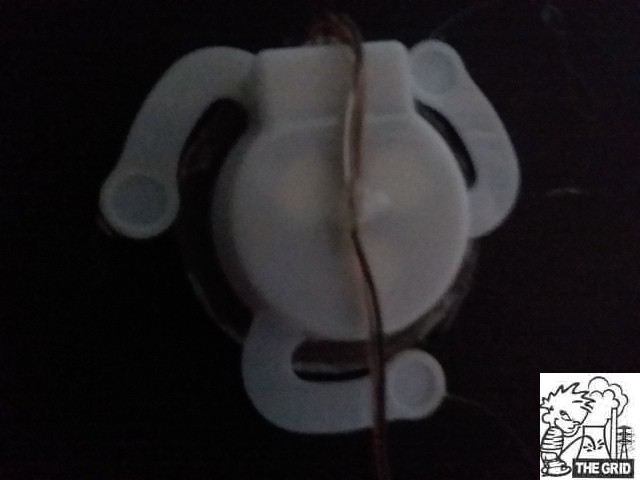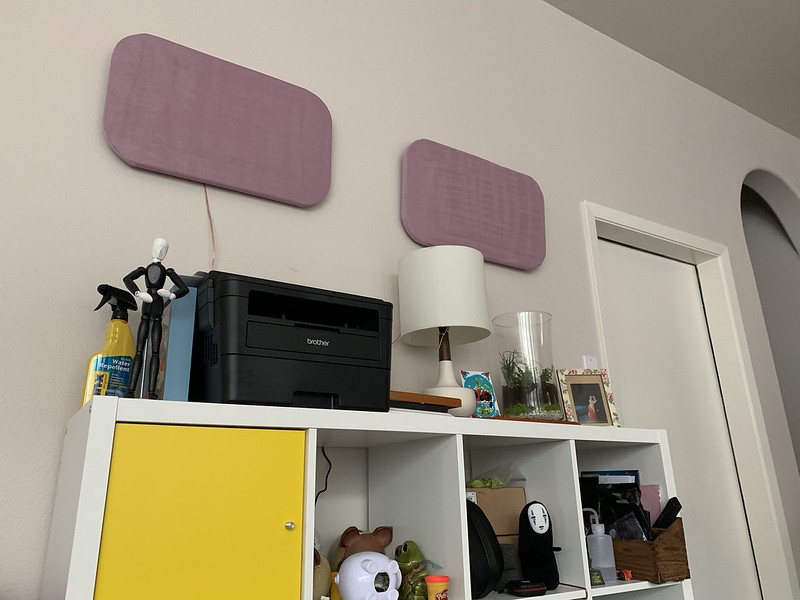It must be worth a shot......40cm diameter spheres are around £40-50.00 each. Maybe start with a smaller diameter and see.....
I’m just going to throw this into this thread as I have just ordered a pair of ‘exciters’, and I’m interested in spherical speakers.
Has anyone tried attaching one to a polystyrene sphere, perhaps 40cm diameter?
(available on eBay) Surface area equal to a 100 x 50 cm sheet. Not really a DML but.....
If the sphere is hollow on the inside then it could work but a solid sphere of polystyrene would be easily over 3 inchs thick....recommended thickness for a DML panel would be 1inch and lower. Any thickness over 1 inch will start to lose bass response output.
If your goal is to have the sphere only produce mid to high frequencies then its do able.
I have played around with omni DML speakers......what I use that is readily available and cheap is those Styrofoam cups/containers (comes in many different sizes). I use 2 cups and glue them together so they look something like a cone and the exciter is placed either on the top out side or inside of the cup...The bottom of the cup is attached to a small piece of wood using Frost king weather tape as adhesive as well as dampening...Bigger the cup/container the more bass/lower frequencies it will produce.
How does it sound? Well the only omini speakers I have heard in person that I can compare them to are the Mirage omini speakers and they sound similar to those speakers in terms of omini directional aspect..(even though the mirage speakers are not true omni)..sound quality wise they don't sound as good as the mirage speakers though probably due to the omni DML's being very peaky...I could of probably improved on them but gave up that route and went back to concentrate on improving my conventional DML panels.
DML technology was built around the 1960's or earlier.
Bertagni speakers came out in the 70's. YouTube Using Expanded polystyrene.
Sony APM and Technics SB series are DML/BMR technology using aluminum or some type of honeycomb diaphrams.
YouTube
YouTube
Although Ive never seen or heard of those Technics Karma speakers its basically a 4-way open baffle DML/BMR type of loudspeaker. Similar in design to this 4-way bertagni flagship speaker> BES SM300 Speaker System Review price specs - Hi-Fi Classic
Yamaha came out with there ear speakers combining DML technology with conventional cone technology. YouTube
Shelley Katz worked on the Podiums> http://6moons.com/audioreviews/podium/1.html
Bertagni speakers came out in the 70's. YouTube Using Expanded polystyrene.
Sony APM and Technics SB series are DML/BMR technology using aluminum or some type of honeycomb diaphrams.
YouTube
YouTube
Although Ive never seen or heard of those Technics Karma speakers its basically a 4-way open baffle DML/BMR type of loudspeaker. Similar in design to this 4-way bertagni flagship speaker> BES SM300 Speaker System Review price specs - Hi-Fi Classic
Yamaha came out with there ear speakers combining DML technology with conventional cone technology. YouTube
Shelley Katz worked on the Podiums> http://6moons.com/audioreviews/podium/1.html
Shelley Katz worked on the Podiums> 6moons audio reviews: Podium Sound Model 1
I have it on good authority that Shelley Katz was not a contributor to the technical development of the Podium loudspeaker. He was a front man, marketing.
I have it on good authority that Shelley Katz was not a contributor to the technical development of the Podium loudspeaker. He was a front man, marketing.
Paul Burton developed the original podiums then Katz took over the project, what he actually contributed I don't know but the new podiums 0.5 seems to be credited to Katz.
It was interesting to find out how the Podium 1, Podium 2 and Podium .5 models differ. How the first two models work only in the piston or resonant mode, and the last one in pistons and resonating modes at the same time? Or is it just Shelley Katz's fantasies?
The Beer Can Bottom Thingie..
Re: Page 23..
Reopened a thought I played with some time ago. Actually used some decent exciters and larger foam boards. Missed the "Golden" location (3/5ths) but.. Ended up being 3/5 and 4/5..
Suckers have so much highs I had to put a .6mH choke inline! Not done tuning yet but they sound pretty good.. 😉
Used the foam board from Dollar Tree. Cut 1 sheet in half. 15"x20". Rounded the corners, found the spot to mount the can bottom, cut a hole ~2.5", cut the bottom of the can off and left just enough side material to just be in contact with both surfaces. Hot glued it in on both front and back. The exciter has been well used with no stickem' left on the feet or the voice coil. Hot glue does wonders.. 😎
I applied a light coat of hot glue to the backside of the concave where the voice coil will make connection from the rear. Ran a small bead of hot glue to the voice coil where it connects. Used a small torch to heat the hot glue from the front of the can bottom, just enough to melt the glue. Centered the exciter and let it cool. Keeping pressure to the exciter for a good, solid connection. Assured connection to the can bottom. Hot glued the feet of the exciter to the foam..
They are suspended from the ceiling with twine. I'm running 3 watts/ch. and they are as sensitive as any of the speakers that I've used. Impressive..



Re: Page 23..
Reopened a thought I played with some time ago. Actually used some decent exciters and larger foam boards. Missed the "Golden" location (3/5ths) but.. Ended up being 3/5 and 4/5..
Suckers have so much highs I had to put a .6mH choke inline! Not done tuning yet but they sound pretty good.. 😉
Used the foam board from Dollar Tree. Cut 1 sheet in half. 15"x20". Rounded the corners, found the spot to mount the can bottom, cut a hole ~2.5", cut the bottom of the can off and left just enough side material to just be in contact with both surfaces. Hot glued it in on both front and back. The exciter has been well used with no stickem' left on the feet or the voice coil. Hot glue does wonders.. 😎
I applied a light coat of hot glue to the backside of the concave where the voice coil will make connection from the rear. Ran a small bead of hot glue to the voice coil where it connects. Used a small torch to heat the hot glue from the front of the can bottom, just enough to melt the glue. Centered the exciter and let it cool. Keeping pressure to the exciter for a good, solid connection. Assured connection to the can bottom. Hot glued the feet of the exciter to the foam..
They are suspended from the ceiling with twine. I'm running 3 watts/ch. and they are as sensitive as any of the speakers that I've used. Impressive..



Home Depot sells pink XPS “project panels” at 24in x 24in size.
Yeah thats what tech ingredients settled on in his second video: those square xps panels + acoustic ceiling tiles (2x4ft?).
What the beer can do? Act as an aluminum dome tweeter?
It makes the highs more.. Defined?.. Sharper?.. Unveiled?.. To me, the characteristics of the highs are more open than being transferred/radiated through/via the foam. Aluminum isn't the best material for this job, being it just doesn't "Ring" like brass but it's a cheap and easy key to another door of experimentation..
As Frank Zappa said..
“Without deviation from the norm, progress is not possible.”
I may be off piste a bit here....
Mounting them directly onto a wall, isn't any back wave of bass-mid proportions going to be almost 180 degrees out of phase with the front? I may be wrong as exciters energise the whole surface rather than move piston-like.
They do work better in the open. But they are distributed modes - meaning front and rear phase font cancel out like a dipole. They are closer to flat omni speakers.
- Home
- Loudspeakers
- Full Range
- A Study of DMLs as a Full Range Speaker
